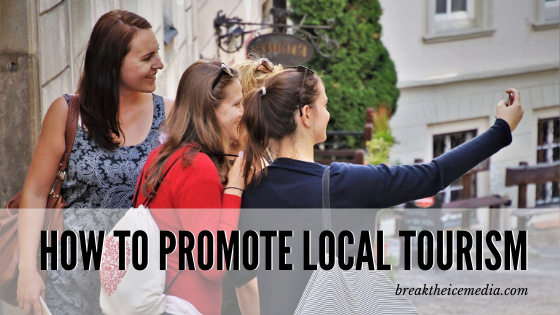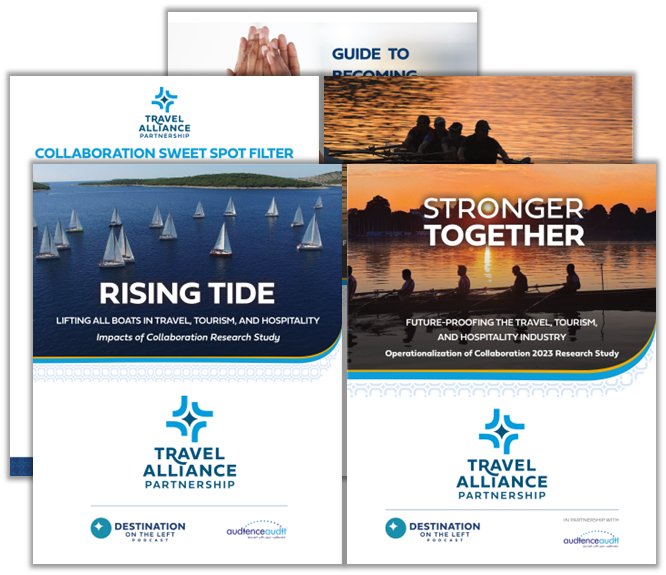How to Promote Local Tourism
When it comes to promoting your tourism business – whether you’re an attraction, restaurant, museum or hotel, you may feel like you’re all alone. Luckily, that’s not the case. By working with your Destination Marketing Organization (DMO) or Tourism Promotion Agency (TPA), you’re able to get some free marketing that will help to distribute your message beyond your own efforts, and attract more visitors. Consider it as having someone in your corner that wants your business to succeed just as much as you do.

There are a few things you need to know in order to get the most exposure possible. Here are some tips and tricks for getting the most out of your partnership with local and regional tourism offices.
How DMOs Support Tourism
First, let’s talk about how local and state tourism offices are working to support local tourism. There is a lot that goes into promoting a destination – and most of it is behind the scenes.
Websites
Every local and regional tourism office has a website. Some are more in-depth than others, but they usually have listings for the same categories: things to do, lodging, food and drink. This is where visitors can find the contact information for specific attractions and businesses, as well as pictures and descriptions. Most websites also have event calendars that showcase festivals, performances, even seminars taking place across the region.
Guides
Most tourism offices still distribute thousands of printed brochures via welcome centers, thruway stops and visitor requests. Through gorgeous photos and captivating language, guides or brochures paint an overall picture of what a visitor can expect. Many also offer ad space if you want to stand out in front of an interested audience.
Press releases
When there is an announcement – such as a new restaurant in town or a state park winning a national award – the tourism office will send out a press release, which could get picked up by regional or national publications. It may even generate interest from media who want an interview or travel writers who want to experience it for themselves.
Press releases are not limited to local marketing offices. Finger Lakes Regional Tourism Council (FLRTC), the official promotion organization for the 14-county Finger Lakes Vacation Region, distributes monthly press releases highlighting regional assets. Examples include activities to celebrate the 100th anniversary of women’s suffrage and new tourism assets that opened in the last six months.
See how we built brand awareness through PR outreach and attracting media attention.
Blogs
Blog posts are an interesting way to promote multiple assets at once. They provide a roundup of attractions with a common theme, and are usually written more conversationally than other marketing pieces. Blogs can also provide a deeper look into a niche topic as it relates to a destination, than say, a brochure could. Corning and the Southern Finger Lakes does a great job at this by providing a perfect picnic guide and tasty salad spots around Corning’s Gaffer District.
Social Media
All of the different tactics listed above provide great content for a tourism office. Events, announcements, media placements and blogs can be shared across social media channels.
Large Activations
Tourism offices can reach larger audiences with a presence at popular events and exhibits.
Depending on the event, attendees may be from another city or even another state. A major event is the perfect place to promote its destination to an audience that’s already there, that may be unfamiliar with the area and is most likely looking for other things to do. The TPA can share the best places to go, eat or sleep, and hand out branded materials or collateral.
Governor Cuomo invested in ten new welcome centers across New York State in recent years, with the goal to promote local tourism. Each welcome center highlights that region’s renowned tourism destinations through photos, videos, Taste NY market and artifact wall. I Love NY worked closely with local and regional tourism offices to gather artifacts and iconic symbols from partners that visually explain the history and culture of the region. The Southern Tier welcome center, for example, includes a race car from Watkins Glen International and hanging glass sculpture from the Corning Museum of Glass.
Commercials
Marketing offices with larger budgets – think state tourism offices – run T.V. commercials to promote to both state-wide and out of state audiences. You may have seen commercials from I Love NY, showcasing various assets and attractions across the state – from equal rights history to fun outdoor activities.
How Can you Help?
There are plenty of ways you can help your tourism office promote you. It starts with getting on their radar!
Update them Constantly
First, make sure to tell them when any contact information or website links have changed. Having current contact information for the organization and proper links to social media and website pages are a must in order to get promoted.
Secondly, let your TPA or DMO know whenever you have something new and exciting – such as a new restaurant, new product, new event or new drink. Nothing is too big or too small. Local tourism offices get requests for information about assets that fit a specific topic. For example, a PR agency may have a lead on a writer looking for “top rated resorts in the Finger Lakes Region” or “dishes utilizing fresh and seasonal ingredients.” Make sure you communicate clearly and frequently enough that your tourism office understands what makes you different. Once they’re aware of the awesome things you’re doing, they’ll have what they need to include your attraction in pitches to the media or on FAMs.
Submit Events
As I mentioned above, TPAs have event calendars on their websites. This helps visitors to the website (and the destination) quickly see what is going on while they’re in town. Tourism offices also tend to promote local happenings across their social media channels, giving your event more reach. And if it’s unique enough, the event may be worth pitching to the media for coverage. Make sure your TPA knows about your event so you can get this easy, added exposure.
Be Quirky
Do you have a bizarre stat you can boast? A quirky cocktail that uses a unique ingredient? Maybe your museum is haunted by an anti-alcohol advocate. Don’t shy away from the weird! Share these one-of-a-kind characteristics with your tourism office. Journalists and visitors are not looking for the same old, same old. Instead of a traditional fall activity, they’re more interested in seeing something like underwater pumpkin carving.
Respond Quickly and Completely
If your tourism office asks you for information, it is best to respond quickly and with plenty of information. Whenever possible, include photos, videos and quotes from notable staff. These requests usually come with a short turnaround because an agency, organization or journalist contacted them for inclusion in a press release, exhibit, media pitch or article.
Keep your Photography Up-to-Date
When they want to promote your asset or pitch it to the media, they’re going to need good, high-quality photos to show it off. And they’ll need them right away – you won’t have time to call up a professional photographer. So whenever you can, take photos of your asset. That includes in all seasons (show off your winery surrounded by blooming tulips and in front of colorful fall foliage) and during any special event (capture your display during Pride Month).
Keep learning with our handy list of travel and tourism terms, acronyms & abbreviations.
Author
Related Posts
Welcoming All 2.0: Key Takeaways from Our Community Conversation on Inclusion in Tourism
In our rapidly evolving travel industry, the concept of being a “welcoming destination” is no longer simply about inviting more visitors. It’s about deeply understanding…
10 Must-Listen Podcasts for Travel, Tourism & Hospitality Professionals
I’ve had the joy of hosting Destination on the Left—an award-winning podcast spotlighting the travel, tourism, and hospitality industry—since 2016. My team and I believe…
